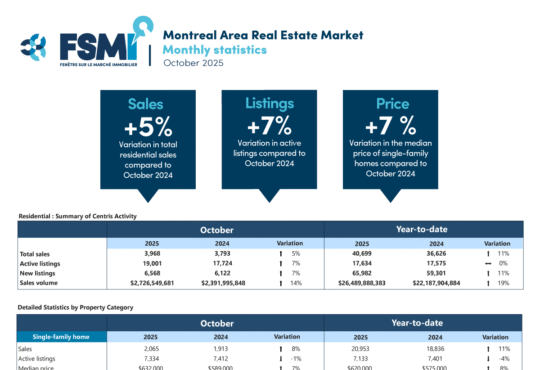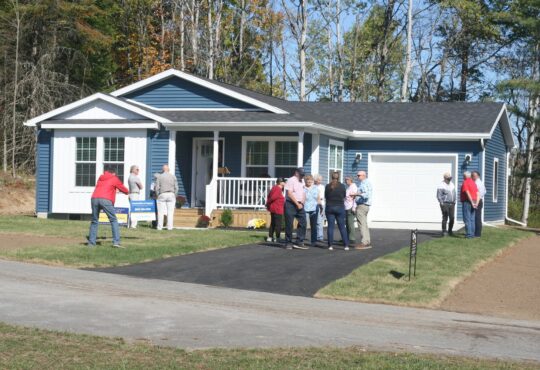- The Landbank Authority’s “Save Our Structures” program sells vacant and abandoned properties for $1 to eligible buyers who commit to redevelopment.
- The program is tailored to prioritize buyers whose redevelopment plans will most benefit the neighborhood.
- The program attracted interest following a series of open houses in August, but it has been around for years.
- It is unclear how many of the houses sold through the program have achieved the intended end use agreed upon in the application process.
Home ownership means everything to Ebony Robinson.
In the 2000s, as a young, single mother, she worked tirelessly to provide a stable home for her son.
Now, after rehabbing a home she bought from Louisville’s Landbank Authority for $1 and finding a buyer just one day after listing her investment property on the market, she’s proud to have a hand in helping a young father do the same thing for his son by selling at an affordable rate.
“It just warmed my heart,” Robinson said.
For Landbank Authority officials, Robinson’s story is a microcosm of what the “Save Our Structures” program is designed to do. They hope the once-abandoned home Robinson breathed new life into proves to be a boon not just for the new homeowner, but for the entire Algonquin neighborhood block it sits on by raising property values and improving safety.
For years, the Landbank Authority has administered a handful of development and neighborhood programs that offer various types of properties to buyers who meet certain eligibility criteria.
But the notion of $1 homes turned heads around Louisville in August, thanks to the Landbank-A-Rama, a series of open houses for vacant homes included in the “Save Our Structures” program. The program puts deteriorating homes on the market for dirt-cheap in hopes of attracting buyers who demonstrate they have funds on hand to stabilize them.
The three-day event was a great success, Landbank Authority officials said, generating dozens of competitive applications they hope will give the structures a second chance at being called a home. It also sparked criticism, with one Metro Council member who represents part of the West End raising concerns about the concentration of landbank homes in her district and wondering whether the program is a viable path to homeownership for her average constituent.
“I don’t think it’s designed for small developers, or I don’t think it’s for generational wealth,” Councilwoman Tammy Hawkins said. “I think it’s designed to check a box. You know, we’ve given people an opportunity to purchase these homes for a dollar, but when you really dig deep and you look into it, yes, the houses is a dollar, but to stabilize a lot of the houses, it’s very expensive.”
Authority officials, however, said recent changes to the program give them tools to hold buyers to the commitments they make when applying for the properties, ensuring the best outcomes for neighborhoods. The authority is also now tracking whether investors fulfill their commitments, which it had not done in the past.
Landbank-A-Rama puts $1 homes in the spotlight
The Landbank Authority — made up of multiple taxing entities, including Louisville Metro Government, state government and Jefferson County Public Schools — buys and sells vacant and abandoned properties across the county in an effort to boost property values, broaden the tax base and improve neighborhood safety by putting them back into productive use.
Most landbank properties are foreclosures that the authority bids on through a Master Commissioner’s Sale, though some are donated, said Tia Bowman, an executive administrator in the Office of Housing and Community Development, which oversees the Landbank Authority.
While the Landbank-A-Rama put the “Save Our Structures” program on center stage, the authority’s two development programs that offer properties for $1 — “Save Our Structures” and “Demo For Deeds” — have been around since 2017.
The programs work hand-in-hand. Distressed homes start in the “Save Our Structures” program. If the authority can’t find an apt suitor to rehabilitate them, the homes are transferred to the “Demo For Deed” program, which offers the properties for $1 to buyers who commit to demolition and show proof of funds to get the job done.
While the authority does what it can to salvage structures and avoid placing them in the demolition program, some of the houses fail to attract interest. In the end, outsourcing the demolition saves Metro Government on wrecking costs, Bowman said.
Both development programs have a carefully designed set of eligibility requirements to ensure the desired result is realized. The underside of those requirements, however, is that the properties are only nominally $1. In reality, a prospective buyer often needs tens of thousands of dollars ready to invest to have a legitimate shot at acquisition.
Landbank Authority officials said they have tried to distance themselves from the fanfare-generating notion of a $1 home. A news release announcing the Landbank-A-Rama, for instance, did not mention the $1 price tag.
Information provided by the Landbank Authority shows the vast majority of homes sold through the “Save Our Structures” program since 2017 were in west Louisville neighborhoods. Of 112 properties that have been sold or are slated to be sold through the program, only nine are located outside the West End.
A similar — though less pronounced — trend is true of the “Demo For Deed” program. Of 42 properties sold or slated to be sold through the program, nine are also located outside the West End.
Bowman said the Landbank Authority owns and pursues properties across Louisville, but the majority of the authority’s inventory is in the West End.
“We know that investment isn’t just rolling in,” Bowman said. “We know that we have to be the catalyst.”
For Hawkins, who represents a swath of the West End, the Landbank-A-Rama engendered concerns about gentrification and false hope. Many residents in areas with high numbers of landbank properties would not be able to put up the proof of funds needed to be eligible for purchase, she said. And others might not have the time or experience to undertake the mammoth project that is renovating a crumbling home.
“They’re just doing their job, but at the same time I have to say you’re not doing the city a favor,” Hawkins said. “If you’re going to give them the funding to fix the houses up and not take them through a lot of red tape to develop them, then you’re doing the constituents a favor.”
Several investors who have bought homes through the program, authority officials and national landbank experts, however, agreed that ready cash is necessary for success in revitalizing the languishing properties.
Tarik Abdelazim, vice president of technical assistance for the Center for Community Progress, which houses the National Land Bank Network, works with governments around the country to design landbank programs. Government intervention, he said, is often needed to spark investment in areas with a high concentration of distressed properties.
“The private market has walked away,” Abdelazim said. “So there needs to be a public steward that is going to kind of triage this crisis.”
Still, when dealing with decaying homes, someone has to foot the bill for fixing them up.
“If it’s going to require 100,000, 150,000, sometimes 200,000 dollars to rehab these properties, and it’s in a neighborhood real estate market where the home sales are 60, 80, 100,000 [dollars], it doesn’t work,” Abdelazim said. “When you do these $1 sales and they’re the worst of the worst, and it’s a last-ditch effort to save taxpayers from demolition, it does prioritize those with access to cash.”
Landbank changes aim to ensure neigborhoods benefit from sales
While cash might be necessary to revitalize the structures, a set of changes to the “Save Our Structures” program enacted in summer of 2025 shore up the Landbank Authority’s ability to get its houses in the hands of people who have the neighborhoods’ best interests in mind, Bowman said.
Prior to the changes, “Save Our Structures” applicants would commit to an outcome agreed upon with the Landbank Authority, such as selling or renting at an affordable rate or at market rate. But that commitment was made only in the application process as a means to evaluate and select the winning applicant — not tied to any compliance requirements — limiting the authority’s ability to hold buyers accountable after the sale.
The authority also did not previously track the outcomes of the homes sold through the programs, so it is unclear how many of them achieved the outcome the authority hoped they would. Officials are now tracking that information.
“We want to make sure who we’re selling to, they’re doing what they’re saying they’re going to do, and that if you won this property based on you saying you’re going to sell it at an affordable rate of 50% (of the area median income), that you’re doing that,” Bowman said.
Now, through right of first refusal, the authority receives notifications when properties are listed for resale and gets the first opportunity to buy them. The authority does not expect to exercise this option, Bowman said, but the notices will provide valuable data for tracking property’s down the line.
New deed restrictions and a legal agreement also allow the Landbank Authority to recover properties if a buyer fails to honor their commitment.
“They are signing a document to give the Landbank Authority power of attorney over that property if they do not do per their agreement,” Bowman said. “We can record that power of attorney and then we can prepare our own deed to ourselves.”
Rev. Jamesetta Ferguson, who sits on the Landbank Authority’s board, said the landbank has struggled to hold investors to account in the past. The recent changes, she said, give the authority effective mechanisms to remedy those problems.
“I think we’re moving in the right direction,” Ferguson said.
Other changes to the “Save Our Structures” program include a lower proof of funds to qualify and changes to the applicant scoring system. The current scoring system favors applicants who live, operate a business or have invested in other landbank properties within a mile of the property; those who plan to reside in the home after the rehab; and those who plan to sell or rent the home at an affordable rate.
Investors, neighbors reflect on ‘Save Our Structures’ program’s impacts

One of the program’s many goals is to promote neighborhood safety. In a news release, Mayor Craig Greenberg said addressing vacant and abandoned properties that have become “hosts for illegal activity” is an “integral part” of his Safe Louisville Crime Plan.
People who neighbor “Save Our Structures” properties largely told The Courier Journal they welcome the $1 sales if it means the homes will be fixed up and occupied. And several developers said they’ve seen untoward activity diminish as they started to work on the homes.
Bryan Romero, who runs building and remodeling company Romero Properties LLC with his brothers, has lived in the Newburg neighborhood home he bought for $1 since 2024. Since taking possession of it and investing in its facelift, he said he’s noticed a big difference.
“Whenever this property was vacant, there was some very bad foot traffic around here,” Romero said. “I mean, you got to put up a fence or two, but after that, the neighborhood does get better.”

Not all residents who live near the properties have gushed about the experience, however.
For more than a decade, Latonya Jones has lived in her Parkland neighborhood home, just one door over from a home sold through the “Save Our Structures” program in 2021. Other than people who occasionally stop by to complete work, the home has sat vacant for years, she said.
“I wish they’d tear it down,” she said. “It’s an eyesore.”
While “Save Our Structures” program participants commit to a 12-month development timeline, the Landbank Authority grants extensions to developers who provide updates about the project’s progress and circumstances.
Over the years, 21 homes sold through the program have received development timeline extensions, Aaron DuVall, director of communications for the Cabinet for Economic Development, said in an email.
Still, the majority of feedback The Courier Journal gathered about the “Save Or Structures” program was positive.
The garbage Robinson had noticed accumulating in the backyard of her recently sold Algonquin neighborhood home became a nonissue after rehab work got underway. Neighbors approached her on multiple occasions to praise her for the work she was doing, she said.
Red Door Properties Group LLC proprietor Anthony Silver, who is in the process of rehabbing his third $1 house, with plans to sell it to his daughter, said it’s an opportunity to help his daughter build equity on the same block he grew up on.
The first two homes Silver bought through the program have been rented out at rates affordable to those who make no more than 80% of the area’s median income, or $77,300 annually for a family of four in Jefferson County.
Amongst all the developers interviewed for this story, a common thread emerged: The program is designed for those ready for a big project.
And that finished product, Robinson said, is entirely worth it.
“To the average person going into those properties, it’s probably like, ‘I don’t want this. This is horrible.’ But you’re getting a whole house for $1. What did you really think it was going to look like?” Robinson said. “Is it an easy project? No. Is it an achievable project? Absolutely, it is — with hard work.”
Contact reporter Killian Baarlaer at kbaarlaer@gannett.com or @bkillian72 on X.




